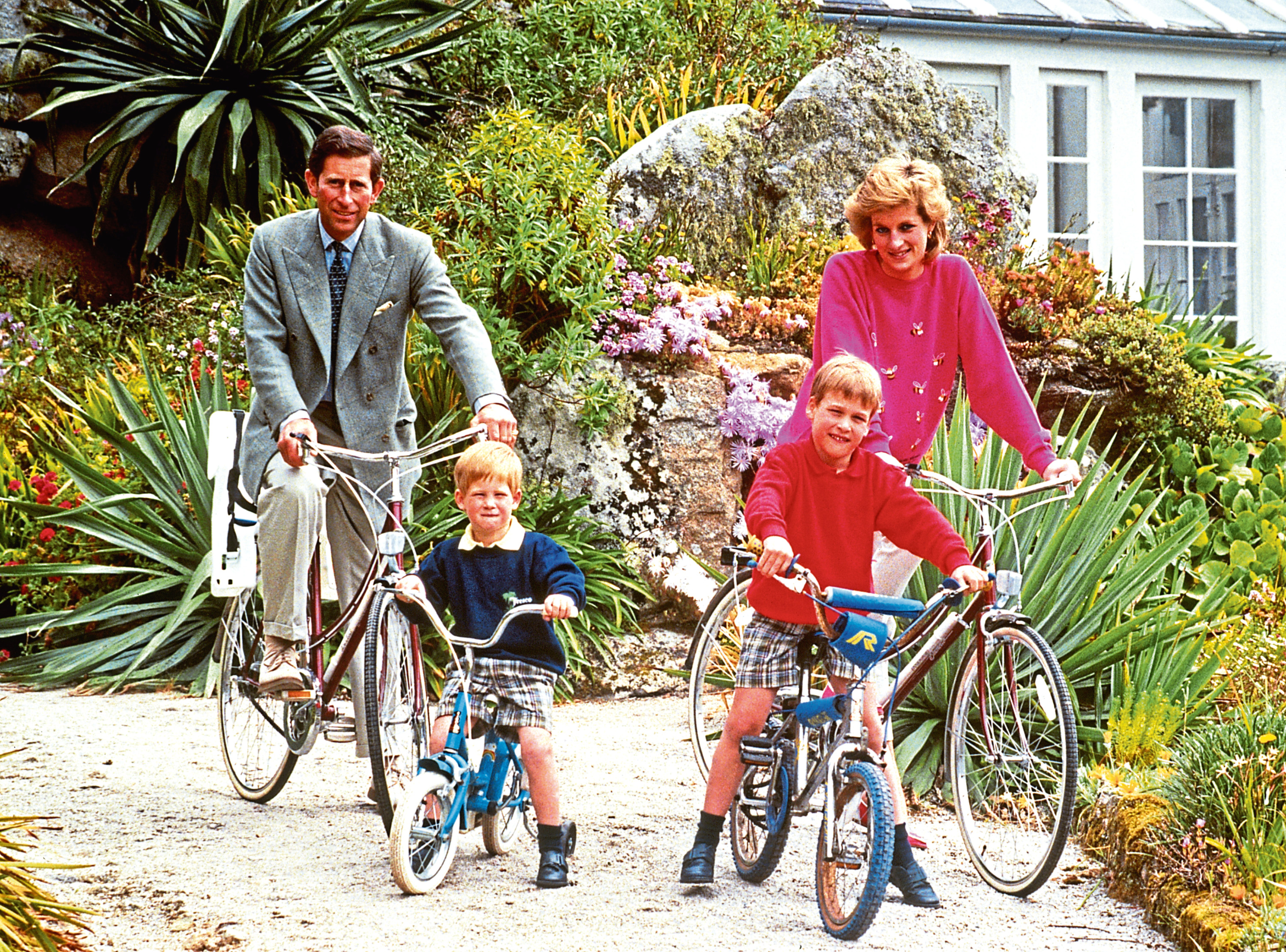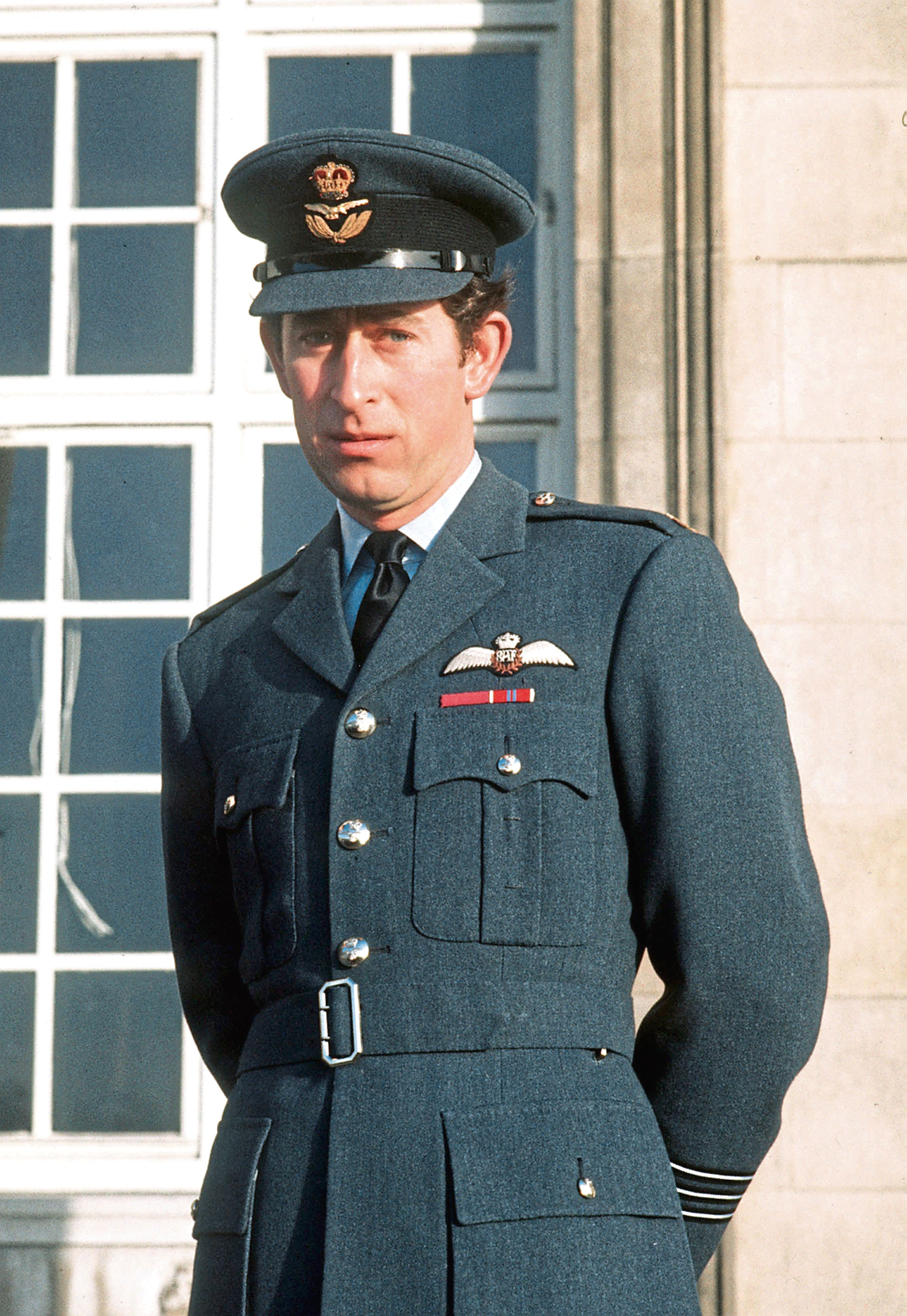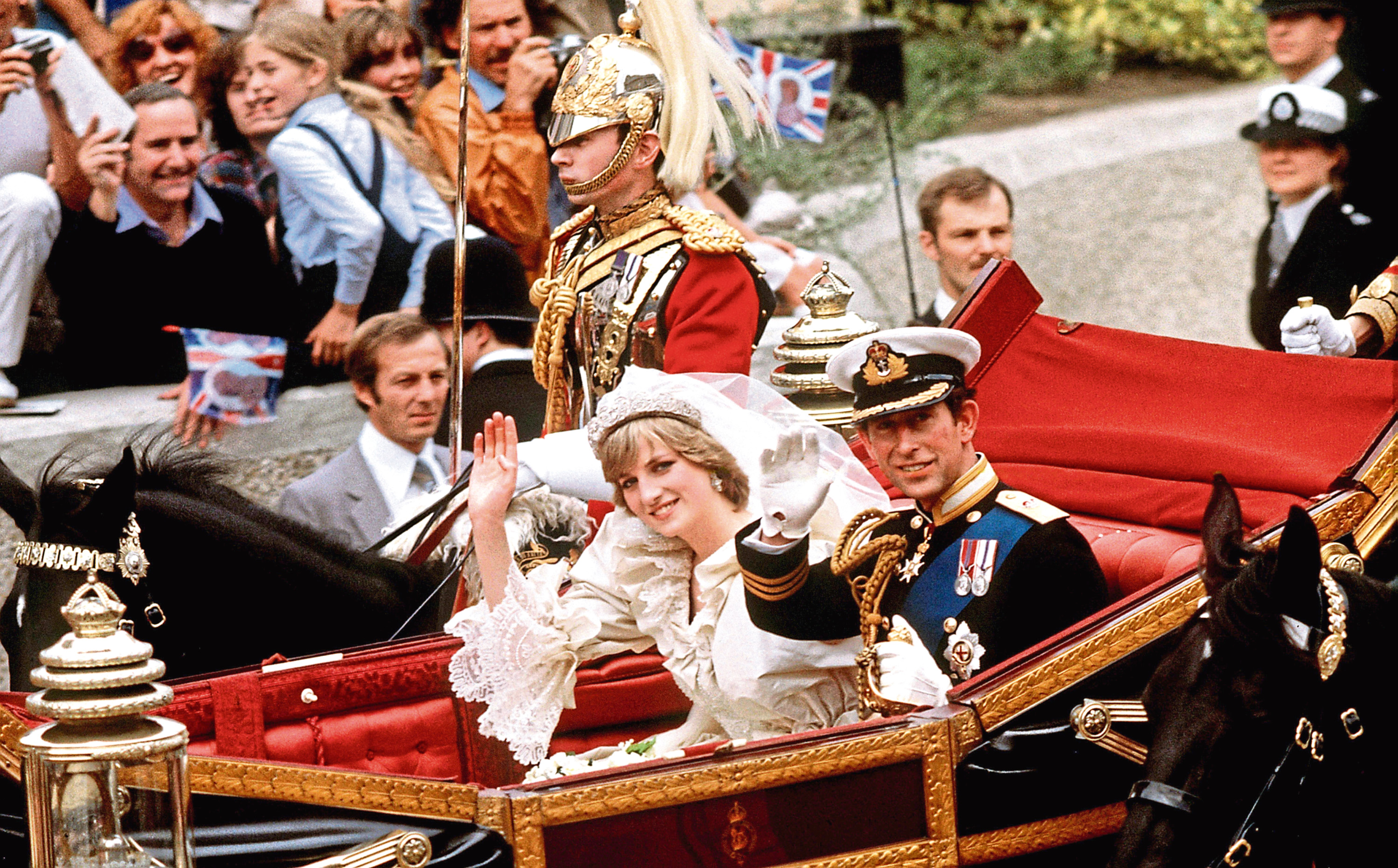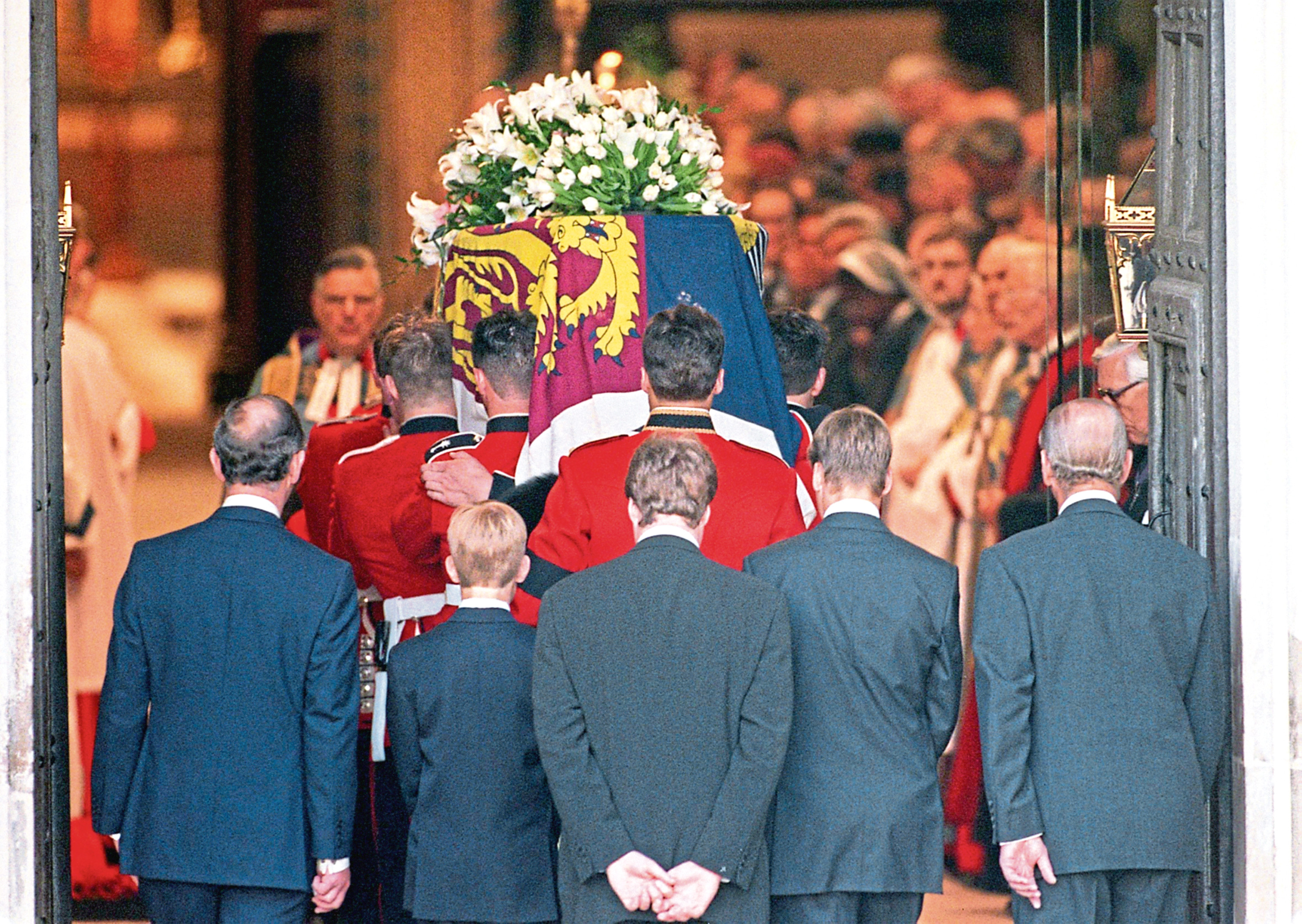
PRINCE CHARLES had long fancied following in his father’s footsteps and taking to the skies.
The Duke of Edinburgh had gained his RAF wings in 1953, got the helicopter version with the Royal Navy a few years later, and added his private pilot licence before the Fifties were over.
He would accumulate almost 6,000 hours as a pilot in 59 types of aircraft over 44 years, so his eldest son had a lot to live up to.
Charles, too, would serve in the RAF and Navy, and it was in his second year at Cambridge that he asked for Royal Air Force training.
In March 1971 he flew himself to the RAF college Cranwell to train as a jet pilot and also began a six-week course at the Royal Naval College Dartmouth.
He would serve on HMS Norfolk, a guided-missile destroyer, and the frigates Minerva and Jupiter.
Charles qualified as a helicopter pilot at RNAS Yeovilton, joining 845 Naval Air Squadron and operating from HMS Hermes.
Even the Duke of Edinburgh, who had always wished he could continue doing such things, would have looked on with a bit of envy and pride, too.
It was only a crash in 1994, flying a BAe 146 in the Hebrides, that brought Charles’ airborne escapades to a close.
By that time he had been in command of coastal minesweeper HMS Bronington for 10 months’ active Navy service and regularly flew a Hawker Siddeley Andover, Westland Wessex and other machines.
One of the worst flights he’d ever take, of course, was to Paris with former wife Diana’s sisters to bring her body back to the United Kingdom – but there were some very happy, and some dreadful, times to come before then.
Having got to know her, and realising she was the woman he would finally give up his bachelor lifestyle for, Charles proposed to Diana in February of 1981.
Their relationship, which had begun somewhat hesitantly, blossomed when he invited her aboard royal yacht Britannia for a weekend’s sailing to Cowes.
That having gone splendidly, she was asked to visit Balmoral in late 1980, and to Charles and Diana’s delight, the Queen, Queen Mother and Duke of Edinburgh hit it off with her.
During their courting days in London, they were predictably pestered by the press at every turn, but it soon became clear this was far more serious than any of his previous relationships.
After his February 6 proposal their engagement remained secret for a few weeks, but with the whole world seemingly obsessed with nothing but the wedding, when it would happen and every detail of Diana’s clothes, hair, jewellery, past, politics, likes and dislikes. It’s fair to say she had bowled over far more people than Charles’ closest relatives.
The engagement was made official on February 24.
On July 29 1981 at St Paul’s Cathedral they were married with the whole world looking on.
Diana had chosen a large ring, with 14 solitaire diamonds around a 12-carat oval blue Ceylon sapphire set in 18-carat white gold.
Not unlike her mother’s engagement ring, it would later become the engagement ring given to Catherine, the Duchess of Cambridge.
Diana was also presented with a magnificent sapphire-and-diamond brooch as an engagement gift from the Queen Mother.
Her life would change in more ways than just gaining sparkling stones – Diana gave up her role as a kindergarten assistant and for a while resided at Clarence House, the Queen Mother’s home.
She then moved to Buckingham Palace until the big day. She was not only about to become the first royal bride to have had a paid job before her engagement, she was the first Englishwoman in three centuries to marry an heir apparent.
The day so many had waited for came in March 1981, when she met the Princess of Monaco at Goldsmiths’ Hall, her first public engagement.
In years to come, she would become much more stylish and sophisticated at such events.
Still a few months short of her 20th birthday, which she’d celebrate weeks before the wedding, she was shy but beautiful, a designer’s dream with her slim, elegant figure.
Around the world hair stylists and fashion companies were licking their lips and hoping to persuade the most famous young woman on Earth to try their wares, with huge sales instantly guaranteed as other women copied her look.
Diana would certainly have to get used to being looked at and studied – there were 750 million people tuned in globally to watch the wedding, with more than 600,000 spectators lining London’s streets just for a glimpse of the nervous couple on their way to St Paul’s.
She called him Philip Charles rather than the other way round at the altar, and didn’t promise to “obey” him, something they had agreed to omit from the vows.
It caused a zillion comments, of course, but not as many as her stunning dress with its 25ft train, valued at around £9,000. She looked, of course, a million dollars.
As Princess of Wales, she became the third-highest female in the United Kingdom Order of Precedence after the Queen and Queen Mother.
As for Charles, he decided they would live at Kensington Palace and Highgrove House, and he would make history in being present for the birth of their two sons, William and Harry.
It must have been unusual, for a man who had been relentlessly studied and surrounded by gossip and guesswork about his own life, to often find himself in the shadow of his new wife.
The cameras would always automatically head for Diana, but in those early days the couple seemed blissfully happy and if Diana blossomed, Charles showed an eagerness to be a good father and husband.
Behind the scenes, sadly, things would not remain idyllic for very long.
Their marriage was having problems within five years, something many have blamed on their age difference.
Those in the know, however, could see that Diana, very much in love with him, was also troubled by the woman she’d describe as the third person in their marriage.
As it all unravelled, to the horror of the royals, Diana would expose Charles’s affair with Camilla Parker Bowles, and recordings of her own flirtations would also emerge.
At the end of 1992, with their sons still young boys, it fell to Prime Minister John Major to carry out a task he would never have prepared for in his worst nightmares.
He announced Charles and Diana’s formal separation in Parliament.
By then, of course, the media had published a passionate phone chat between Charles and Camilla from 1989.
Later he would say that his interest in Camilla had only resurfaced after the marriage had broken down beyond repair.
They divorced on August 28 1996, and Diana was killed in a car crash in Paris almost exactly a year later.
For the nation, a light had gone out and it led to shock, anger and many sharp words for the future king, and a huge outpouring of grief rarely seen in this country.
Charles, and his parents, children and the royals in general, had a very rocky road ahead of them, and it would take years to come out the other side.
As usual it was the Queen who did most to address the situation and try to heal wounds.
In next week’s final part of our look at the life of Charles and his first 70 years, we see how he has coped since, and focus on some happier times.


Enjoy the convenience of having The Sunday Post delivered as a digital ePaper straight to your smartphone, tablet or computer.
Subscribe for only £5.49 a month and enjoy all the benefits of the printed paper as a digital replica.
Subscribe

